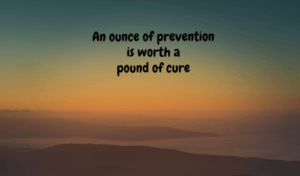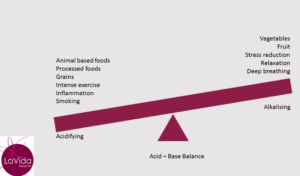Have you heard about Candida, or found on Google an anti-candida diet and wondered what it is all about? Has someone suggested your symptoms may be due to Candida? As a naturopath, Candida makes a regular appearance in my clinic.
Candida may be a microscopic organism, but it can pack a punch!
So what is Candida?
Candida is a yeast-based fungus that is present in the human body, and makes up part of your normal intestinal microbiome (i.e. the all-important bugs in your gut). In healthy people, Candida usually goes unnoticed as the various good bacteria keep it under control.
Candida can become a problem because it’s opportunistic by nature and will strike when your immune defences are low. This can happen as a result of poor diet and lifestyle choices, stress or inactivity. In these circumstances, your good bacteria can be overrun by Candida resulting in the fungus causing a variety of symptoms, some mild and others more serious.
There are a number of species of Candida, with C. albicans being the most well known perhaps, however it may not be the most prevalent in your body. A diagnostic test can help to identify the particular species you are carrying.
Why does Candida become a problem?
As I mentioned, Candida is opportunistic and will usually present itself when your intestinal microflora is out of balance. Your levels of good and bad bacteria can be affected by:
- Eating a diet high in processed foods, refined sugar and trans fats
- A high caffeine intake
- Ongoing stress whether it be physical or emotional
- Inactivity
- Medications, particularly antibiotics
- Alcohol intake
- Smoking
Symptoms of a Candida overgrowth
The symptoms of a Candida overgrowth are varied and therefore it can often be missed.
The main complaint that people connect with Candida is thrush. Thrush is commonly found in the mouth or genitals as Candida thrives in moist, warm environments. Thrush is commonly an issue following a course of antibiotics (an example of a time when your intestinal bacteria is compromised). Thrush generally presents with a white coating of a cottage cheese consistency.
Breastfeeding mothers can also get thrush in the nipples and can pass it to their babies, and then their babies can pass it back to the mother – a difficult cycle to break without the right help.
Other symptoms of a Candida overgrowth can include:
- Persistent, unexplained fatigue
- Skin rashes, psoriasis or acne
- Unexplained weight gain or difficulty losing weight
- Headaches
- Muscular aches and pains
- Recurrent infections
- Digestive disturbances such as constipation, gas, bloating or diarrhoea
- Mood changes, such as irritability, anger or low mood
Please be aware that these symptoms can also be due to a number of other conditions which is why it is always important to see your naturopath or health care provider for guidance before embarking on any treatment.
This is not an exhaustive list and the only sure way to confirm a Candida diagnosis is to complete pathology tests. Based on your clinical picture, your naturopath can advise the most appropriate testing for you. Both stool tests (taking a sample from your bowel movement) and salivary tests can help to diagnose Candida.
However, sometimes, by making dietary and lifestyle changes you may notice an improvement in your symptoms without needing pathology testing. In many cases, a naturopath can be confident of a Candida diagnosis based on your clinical picture and put an appropriate treatment plan in place for you.
How to get Candida under control and keep it that way
Like all living things, Candida has certain requirements to thrive. Primarily, it requires sugar. Put simply, it loves glucose.
To reduce your chances of a Candida overgrowth and its associated symptoms, you can consider the following:
- Eat wholefoods rather than processed foods to reduce your sugar intake. This includes lots of fresh vegetables, lean meat and seafood
- Limit your fruit intake to two pieces per day
- Avoid food products containing yeast
- Include garlic and onions in to your meals. Garlic and onions are prebiotics which help to promote the growth of good bacteria in your bowel
- Eat foods with probiotics such as natural yoghurt, keffir, sauerkraut, miso and kimchi to help support your intestinal microflora
- Practise relaxation to reduce your stress levels
- Ensure you are getting regular exercise as this helps to boost your immune system, reduce stress (provided it is not excessive exercise) and keeps your digestive system working well
- Drink plenty of water as this helps to flush out your bowel. If you don’t like drinking plain water then consider including some herbal teas into your daily routine rather than going for sugary drinks (caffeine free varieties such as dandelion, calendula, chamomile, rosehip, lemon balm, ginger – to name but a few!)
What can a naturopath do to help your Candida?
As naturopaths, we are well placed to identify and treat Candida if it is a problem for you, through appropriate dietary and lifestyle changes, and through the use of some fantastic herbal medicines which work well to attack the fungus and boost your own immune defences.
The above dietary suggestions are a great start, however, for some, it may be necessary to consider a strict anti-candida diet. I believe this is best undertaken with naturopathic support and concurrent herbal treatment to achieve the best outcome in the shortest possible time, and to reduce the likelihood of recurrence.






1 thought on “What is Candida? And how to tell if you have it”
I once came across this term “candida” while was making a regular Google search, and since then was looking for an opportunity to know about it in detail. This article is very well synchronized in terms of introduction of this disease, its causes and symptoms.